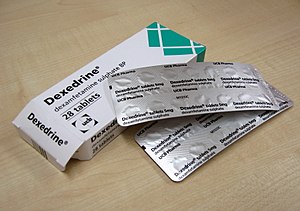In March, a team of 22 chiropractors — joined by 51 chiropractic students — made a powerful impact on the lives of approximately 60,000 people in Haiti and the Dominican Republic during a humanitarian mission sponsored by the World Chiropractic Alliance (WCA) and Mission Life International.
Leading the group was Peter Morgan, DC, the WCA’s representative to the United Nations Department of Public Information Non-Governmental Organization section. It was his 12th mission to Haiti since the devastating earthquake in January 2010.
“This is an area of the world where countless numbers of orphans roam streets paved with garbage. There are thousands of homeless people,” Dr. Morgan noted. “Continuing to respond to the critical needs of this devastated country, each chiropractor brought two suitcases filled with toothpaste, tooth brushes, soap, shampoo, pencils, and small notebooks for the children. More than 7,000 pounds of items we take for granted in the United States, were distributed to children in lands where such goods are needed desperately.”
After serving for four days in Haiti, the team traveled to the Dominican Republic, where they were met by the students. Together they traveled into the jungles and remote villages, bringing chiropractic care to residents in the cities of Ouanaminthe and Cape Haiti.
“The blessed hands continued with thousands of adjustments in other Dominican Republic cities, villages and hilltop towns,” Morgan said. “We’re making slow but steady progress in the most impoverished nation in the western hemisphere.”
One of Morgan’s patients, a famous Haitian actor known as “Boss Massel,” traveled with the doctors for a while, as did Dr. Eddy Delaleu, the only chiropractor in Haiti, and Alex, who runs an orphanage on the island nation.
“Each morning we would drive the bus into Haiti and adjust all the orphans throughout the city. We visited five different orphanages and adjusted about 2,000 people every day at three different churches,” Morgan recalled. They made their “headquarters” in a town named La Vejia DaJabon, where “the horses are not tied down, 200 cows will pass by every hour and herds of sheep pass every two hours. We adjusted everyone in this town as well as all the people they brought from other towns,” he added.
After adjusting such large numbers of people each day, the group would meet in the evening for classes held by Steve Simonetti, DC, past president of the Congress of Chiropractic State Organizations and Gary Deutchman, DC, founder of the Scoliosis Care Foundation.
The group also held a philosophy meeting, where Drs. Simonetti, Deutchman, and Morgan were speakers along with Drs. Bradley Rauch and Ronald Sinagra.
“The following morning, we divided up into 20 different teams and headed out on four buses. Each team had a translator from the local English school and at each site we also had a team coordinator,” Morgan related. “So our team of 70 grew to a team of 110 plus the four bus drivers. On Thursday and Friday mornings, we adjusted in schools. Every school had between 400 and 700 students, teachers, and bus drivers. We averaged 600 adjustments at each school. We checked and adjusted approximately 12,000 children on Thursday and 12,000 children on Friday.”
At one school, Morgan got permission for chiropractic student and team member Sebastian Colon to give a chiropractic talk during a conference with about 100 teachers. The response was so positive that the young man ended up arranging for similar talks to be given to 25 schools during the next mission trip!
By the time the 7-day mission ended, Morgan estimated that some 60,000 people had been adjusted, including a blind man whose sight was restored after an adjustment by Dr. Sinagra. “He was totally blind,” Morgan explained. “After his adjustment the man’s eyes became watery and he began to see shadows. This was witnessed by the chiropractic students and the other people who were waiting to get adjusted.”
Although they lived in the homes of local residents while in Haiti, the group did include a stay at a 5-star resort hotel in the Dominican Republic. “They have more than 1,500 employees, with their own heliport, a harbor filled with yachts and the biggest waterfront Casino on the island, Morgan noted. “For the next trip, we’ve arranged for every employee to be checked and adjusted. It’s amazing that just a few miles away from this incredible beach front resort is a land of immense poverty.”
Before he’d even landed back in the US, Morgan was planning future missions.
“We’ve been tremendously blessed by God for being born in the USA and our greatest blessing of all is our gift of healing hands. What our chiropractic missionaries received from the experience in Haiti is beyond words. We went to Haiti and the Dominican Republic with one purpose, to give of ourselves. We’ll never forget this!”




